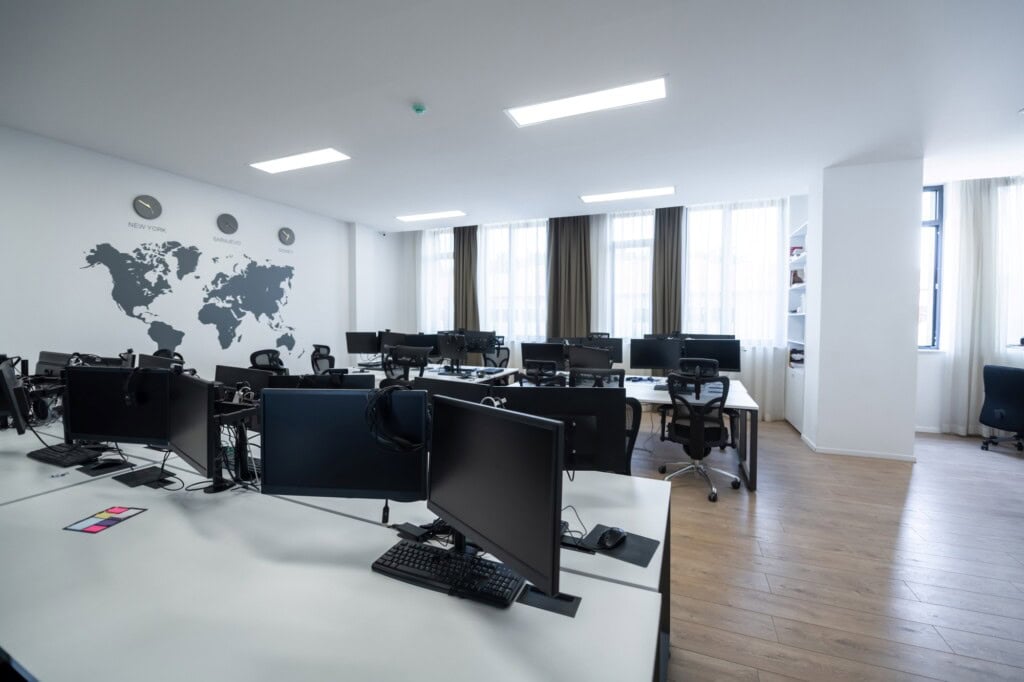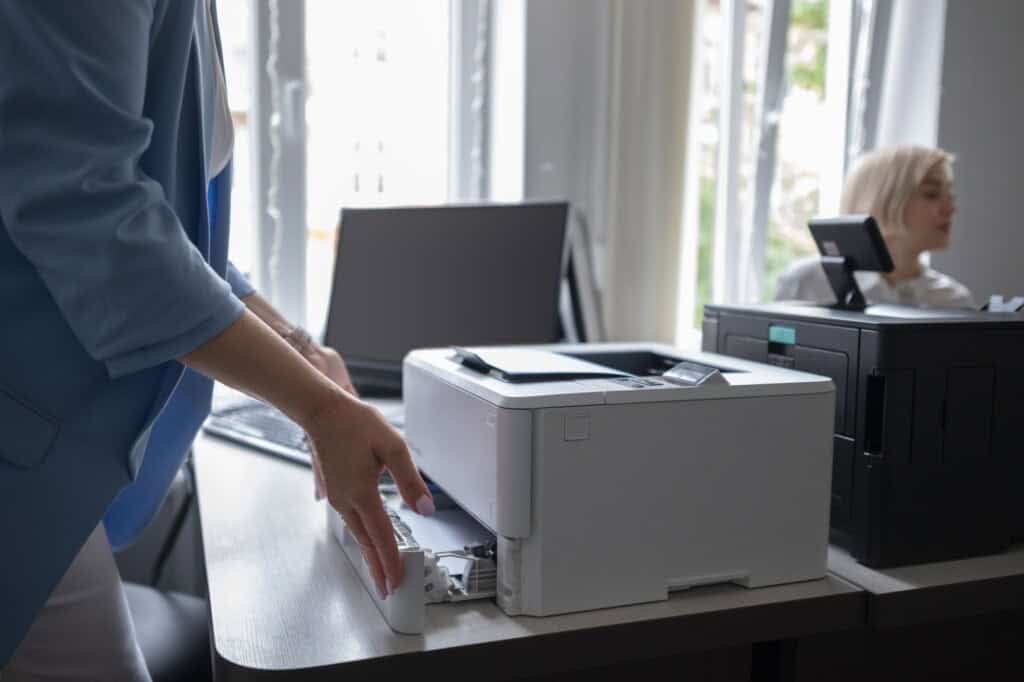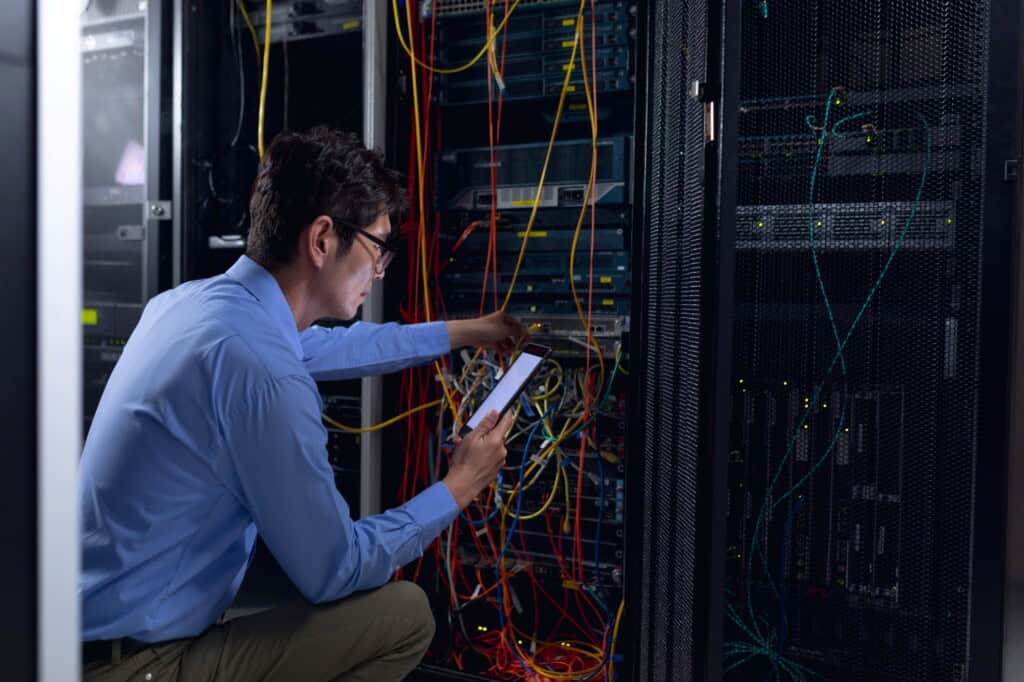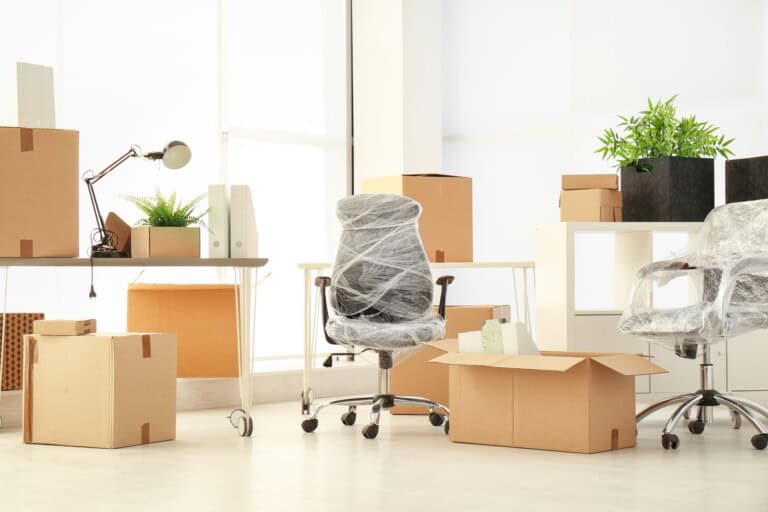Learning how to pack office IT equipment and electronics correctly is essential for a smooth move, whether you’re relocating to a new office or setting up a home workspace. This comprehensive guide covers every step you need to take, from backing up crucial data to expertly packing and protecting your valuable devices. By following these detailed instructions, you can ensure your move is stress-free and efficient and that your equipment remains intact and ready for use.
Key Takeaways
- Back up data and prepare electronic devices by removing batteries and securing cables before packing to avoid damage during the move.
- Use appropriate packing supplies, label boxes clearly, and plan the packing process well in advance to ensure organisation and safety.
- Protect electronics from static electricity and temperature extremes using specialised packing materials and temperature-controlled containers during transit.
Back Up and Prepare Your Electronic Devices
Backing up all important data is the first step. This precaution guarantees that, even if equipment gets damaged during the move, your valuable information remains secure. With your data secure, prepare your electronic devices for packing.
Remove all batteries and ink cartridges, storing batteries in resealable bags to prevent leaks. Secure all cables and power cords to avoid tangling and damage during transit. These preparations will streamline the packing process and protect your electronic items as you pack electronics using packing paper.
Gather and Organise Packing Supplies
Collect all necessary packing supplies, including sturdy boxes, bubble wrap, packing tape, packing peanuts, and plastic bags. Clearly label boxes, especially those with fragile items, as ‘Fragile – Electronics’ to ensure careful handling.
Begin planning at least six weeks in advance to ensure all packing supplies are ready, allowing for efficient packing and avoiding last-minute scrambles. Start by making a checklist of all the necessary materials, such as sturdy boxes, bubble wrap, packing tape, and packing peanuts, to ensure nothing is overlooked. This proactive approach not only saves time but also minimises stress, ensuring a seamless packing process for all your office equipment and electronic items.
Safely Disconnect and Disassemble Equipment
Always switch off and unplug electronic equipment before disassembling to avoid electric shock. Use insulated screwdrivers to minimise electrical hazards and wear protective gear like goggles and gloves to reduce injury risk. Always handle electronics safely.
Microwaves and CRT monitors pose specific safety risks and should be handled by professionals. Consult device manuals for disassembly guidance and safety protocols. Coil and secure wires carefully before packing to prevent tangling and damage during transit. This ensures that all your electronic equipment remains organised and well-protected throughout the moving process.
Label and Photograph Cables for Easy Reassembly
Labelling and photographing cables simplifies reassembling electronic equipment. Use coloured stickers for easy identification and take photos of device connections before unplugging them. These visual aids will be invaluable during reassembly.
Place detachable cables in labelled Ziplock bags to keep them organised. Keep cables, chargers, and remote controls in a separate bag to maintain order. These steps will save time and frustration during setup in your new office.
Packing Computers and Laptops

Use sturdy boxes or original packaging to pack computers and laptops safely. For desktop computers, use double or triple-walled boxes at least 10 cm larger on all sides than the unit. Cushion monitors with at least 10 cm of bubble wrap.
Wrap the hard drive with 3-4 inches of bubble protective packaging for transport protection. Whenever possible, use the original packaging for optimal protection. Here are the specifics of protecting computer towers and monitors.
Protecting Computer Towers and Monitors
To protect computer towers and monitors, gather cardboard boxes, bubble wrap, packing tape, packing peanuts, and plastic bags. Backing up data, removing batteries and ink cartridges, and securing power cords are crucial steps.
Follow the steps for safely disconnecting and disassembling electronic equipment to prevent damage. Use sturdy boxes or original packaging and wrap computers and monitors with bubble wrap or foam. Secure components, perform shake tests, avoid stacking heavy boxes, and keep items dry.
Packing Small Electronics and Accessories
Small electronics and accessories require equal care. Pack small electronics in sealable bags and use sandwich bags for spare parts. Use protective cases for smaller electronics like handheld consoles to minimise damage risk, ensuring the safety of all your electronics. Use packing peanuts as additional protection to prevent movement within the box. Securely pack small electronics and accessories to avoid damage during transport.
Packing Large Electronic Items
For large electronic items, use new, double-walled cardboard boxes at least 5 cm larger on all sides than the items. Sturdy, electronics-specific boxes should be used to prevent damage. Clean flat-screen TVs before packing to prevent scratches.
Wrap each component of home entertainment systems separately to prevent damage. Keep flat-screen TVs upright during the move to avoid screen damage. Use moving blankets and bubble wrap for extra cushioning. Double-box big-screen TVs with padding for additional protection.
Pack the remote and power cord with the flat-screen TV for convenience. If the original box is unavailable, create a DIY box with wardrobe boxes and tape or order a custom crate. These steps ensure your large electronic items are well-protected.
Protecting Against Static Electricity
Anti-static packing materials safeguard electronics from static electricity damage. ESD-safe packaging, available in conductive and dissipative forms, prevents electrostatic discharge damage.
Anti-static materials like polythene films and coated cardboard reduce static electricity build-up during storage and transit. Specialised anti-static packaging products, often pink, distinguish them from non-ESD-safe materials.
Vapor-barrier bags and moisture-absorbing desiccants are crucial in protecting sensitive electronics from humidity-related damage. By mitigating moisture exposure, these materials help preserve the integrity and functionality of your electronic devices during transit.

Ensuring Protection from Temperature Extremes
Extreme temperatures can damage electronic devices, leading to malfunctions. Protecting electronics from temperature extremes is critical for their longevity and performance. Temperature-controlled containers safeguard against extreme heat and cold during transit.
Insulating materials reduce the impact of temperature fluctuations on electronic devices. Custom packaging with thermal liners offers additional defence against extreme temperatures during transportation. Using proper packaging and temperature control enhances the protection of electronic devices during transit.
Additional Moving Tips for Electronics
Secure all movable components within electronics before moving. Use moisture-absorbing materials and sealed bags to protect against moisture. Perform a shake test after packing to check for movement and ensure items are secure. Avoid stacking heavy boxes on electronics and pack heavy items in smaller boxes to prevent damage. These tips ensure your electronics are packed safely and securely.
Unpacking and Setting Up in Your New Office
Upon arrival at your new office, prioritise unpacking essential office equipment like desks and chairs. Labelling boxes beforehand helps identify contents and simplifies unpacking. Unpacking in designated rooms allows easier access to necessary setup items.
Use a soft cloth or compressed air duster to clean electronic devices during unpacking. Retain packing materials until all electronics are set up. Take your time to ensure a thoughtful arrangement of items and equipment.
Summary
Moving an office to Bromley can be a seamless experience with proper planning and execution. From backing up data to unpacking in your new office, each step is crucial for ensuring that your electronic equipment remains safe and functional. By following the expert tips provided, you can pack and move your electronics like a pro. Remember, the key to a successful move lies in the details. Take the time to pack your electronics carefully, use the right materials, and stay organised throughout the process. With these strategies, you’ll be ready to set up and get back to business in no time.
Frequently Asked Questions
Why is it important to back up data before moving?
It is crucial to back up data before moving to protect your important information from potential loss or damage during the relocation process. Ensuring data integrity provides peace of mind and safeguards against unexpected issues.
What packing supplies do I need for moving electronics?
For moving electronics, you need sturdy boxes, bubble wrap, packing tape, and packing peanuts to protect your items during transportation. This will help ensure your electronics arrive safely at your new location.
How can I prevent static electricity damage during the move?
To prevent static electricity damage during your move, use anti-static packing materials like polythene films and coated cardboard for your electronics. This will help ensure their protection and functionality post-move.
What should I do if I don’t have the original packaging for my electronics?
Without the original packaging, it is best to use sturdy, double-walled cardboard boxes for protection. Ensure to fill any empty spaces with packing materials to prevent movement during transit.
How should I organise cables during the move?
Organising cables during a move is essential for a smooth reassembly process. Label and photograph each cable, then store them in labelled Ziplock bags for easy identification.







